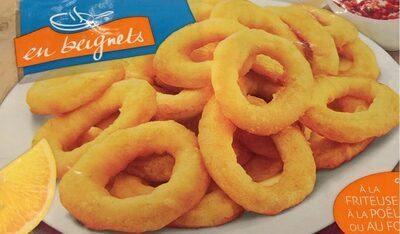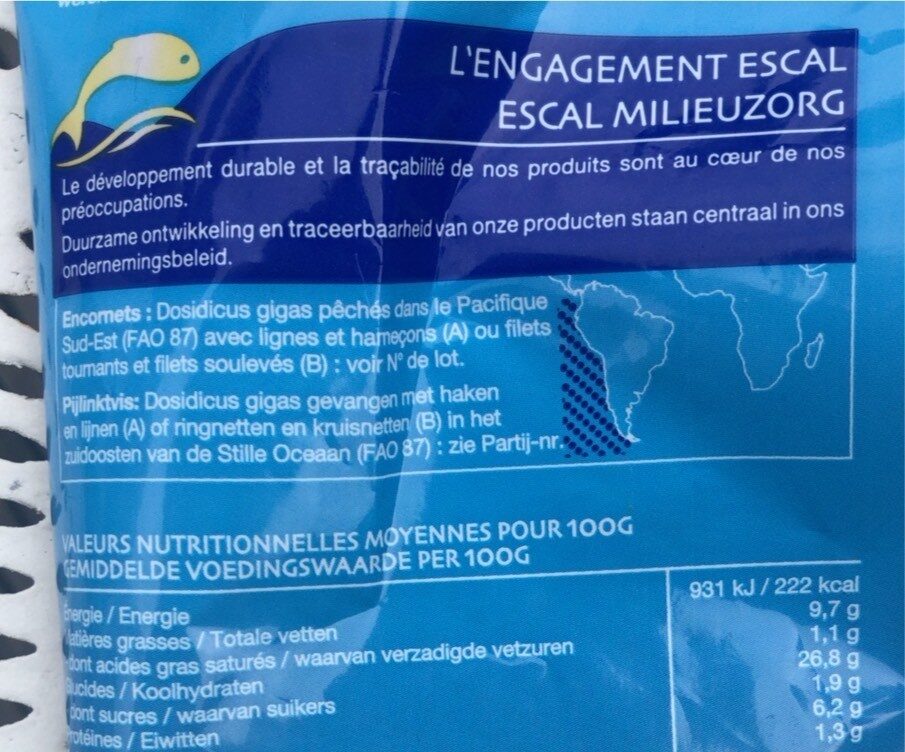Calamar Romana - Escal - 500 g
This product page is not complete. You can help to complete it by editing it and adding more data from the photos we have, or by taking more photos using the app for Android or iPhone/iPad. Thank you!
×
Barcode: 3261080085029 (EAN / EAN-13)
Common name: Beignets d’encornets, préfrits, surgelés
Quantity: 500 g
Packaging: Plastic, Bag, Frozen
Brands: Escal
Categories: Seafood, Snacks, Salty snacks, Mollusc, Breaded products, Calamari, Salty Fritters
Labels, certifications, awards: Sustainable, Fishing method, Sustainable fishery, Sustainable fishing method, Angled fish, Lift net fishing, fr:Pêché au filet tournant, fr:Pêche à l'hameçon
Origin of ingredients: fr:FAO N°87, fr:Océan Pacifique Sud-Est
Manufacturing or processing places: Espagne
Traceability code: ES 26.09063/PO CE
Link to the product page on the official site of the producer: http://www.escal.fr/2011/01/calamar-roma...
Countries where sold: France
Matching with your preferences
Environment
Packaging
Transportation
Labels
Report a problem
Data sources
Product added on by openfoodfacts-contributors
Last edit of product page on by packbot.
Product page also edited by beniben, desan, kiliweb, yuka.sY2b0xO6T85zoF3NwEKvll4ZcufPj26Yaj_foBKi6YalBMzWO8FO5Jj_Das, yuka.sY2b0xO6T85zoF3NwEKvlnFcT4rwqDP-EALgyWqF3Y2tCp_4Z9Zi8qrBL6s.










